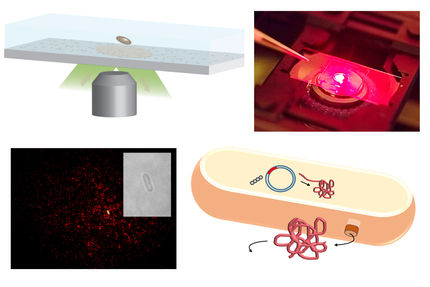Probing the inner secrets of multi-layer carbon nanotubes
Researchers at the University of Surrey have shown for the first time that knowing the structure of the surface layer of a multi-layer carbon nanotube is not enough to predict its electronic properties. The contribution of inner layers is crucial, and this has serious implications when it particularly comes to fabricating electronic devices such as transistors and molecular interconnects. The work reported in Nano Letters addresses essential issues related to the electronic properties of carbon nanotubes, as an understanding of their behaviour at the atomic level is required to fully exploit the tremendous opportunities that these systems could offer in the development of practical nanoscale devices.
Single wall carbon nanotubes can be regarded as individual sheets (one atom thick) of graphite which are wrapped up to form tubes. It is the diameter of the tube and the degree of helicity in this wrapping which determine the electronic properties. Different configurations can result in the tube behaving either as a metallic conductor or as a semiconductor, and this theoretically-predicted relationship between the structure and electronic properties has been confirmed using scanning tunnelling microscopy.
It is also possible to form multi-wall nanotubes comprising several tubes, one inside another. Whereas single-walled carbon nanotubes have been researched and well characterised for many years now, less is known about the multi-wall tubes. How strong is the electrical coupling between layers? How does the helicity of the inner layers affect electrical conduction of the multi-wall tube?
The experiments carried out at the University of Surrey used scanning tunnelling microscopy of double-walled carbon nanotubes to demonstrate an explicit correlation between the helicity of the constituent tubes, their electronic coupling and the overall electronic structure. Cristina Giusca, the lead author of the paper said: "The work is of fundamental importance to the carbon community as it shows the first evidence for a direct correlation between the electronic properties of multiwall carbon nanotubes and the diameter and chiral indices (helicity) of the inner shells".
Professor Ravi Silva, who leads the Advanced Technology Institute at the University of Surrey, indicated that "The work is of crucial importance to all of us conducting research in carbon nanotubes and other forms of quantum transport studies in 1D structures which clearly highlights the importance of the electronic interaction between adjacent layers, which were previously considered to be less important. This work will add new vigour to those examining the use of carbon nanotubes for interconnects in the IC industry. Having only metallic carbon nanotubes may now not be necessary in the design of interconnect wires between semiconductors if multi-walled nanotubes are to be used for this application."
Most read news
Topics
Organizations
Other news from the department science

Get the analytics and lab tech industry in your inbox
By submitting this form you agree that LUMITOS AG will send you the newsletter(s) selected above by email. Your data will not be passed on to third parties. Your data will be stored and processed in accordance with our data protection regulations. LUMITOS may contact you by email for the purpose of advertising or market and opinion surveys. You can revoke your consent at any time without giving reasons to LUMITOS AG, Ernst-Augustin-Str. 2, 12489 Berlin, Germany or by e-mail at revoke@lumitos.com with effect for the future. In addition, each email contains a link to unsubscribe from the corresponding newsletter.




















































